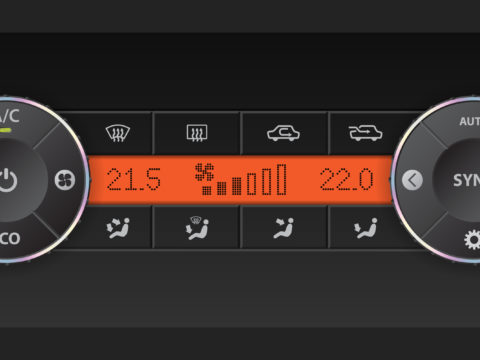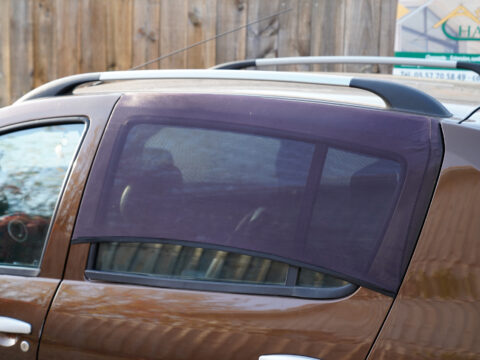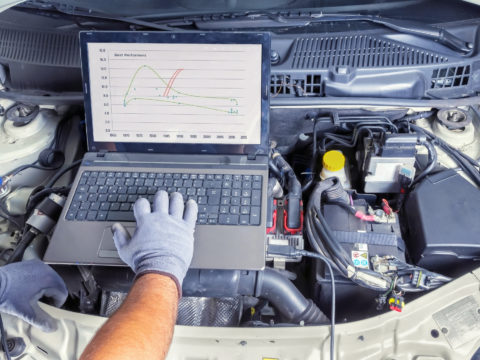More things can go wrong when our vehicles become smarter, and car computers have an extensive database of error codes that may appear on the car’s high-tech displays. You’ll wonder, “what misery am I facing today?” whenever a new code appears.
This post will tell you all the things you need to know about the P003A code on Duramax.

Contents
What Is a P003A Code on a Duramax?
“Supercharger/Turbocharger Boost Control “A” Position Exceeded” is what the Diagnostic Trouble Code (DTC) P003A means.
The powertrain control module (PCM) sets the P003A code when it detects a discrepancy between the desired and actual turbo vane locations during the learning process. The PCM thinks that the turbocharger has either lost its calibration or is still broken in some other way.
Where Is the Duramax Turbo Vane Position Sensor Located?
There is a vane position sensor from the turbocharger’s hub to the fuel line on the driver’s side. Monitoring temperature and humidity levels are easy with this three-wire sensor. The analog voltage signal from a sensor is also helpful because it offers an accurate picture of the environment.
How Does a Mechanic Analyze the P003A Code?
Verifying the presence of the P003A OBD-II trouble code is the first step in determining its cause. The mechanic can hook up a unique scan tool that is more technically sophisticated than the ones you can buy at auto parts stores and check to see if that fault code shows up.
A qualified mechanic can use the information gleaned from the scan tool to filter the potential causes of the P003A code.
What Causes a P003A Code?
These error codes frequently do not describe the issue at hand; instead, they merely point out that a particular system is experiencing some difficulty. Corroded sensors or a number of problems with the turbocharger could also cause a P003A error code.
Below are some of the primary causes you might be seeing in the error code.
Problem With Engine Control Module
Your turbocharged car could occasionally show a glaring lack of performance. It frequently occurs following the replacement of your vehicle’s turbocharger unit. The ECM is having trouble accepting the new unit, so it needs some help.
Faulty Turbocharger
The P003A error code problem may indicate that the turbocharger is not operating correctly. Understanding the Duramax supercharger is crucial because this could come from a variety of potential faults.
Damaged Vane Sensor Plug
Some drivers have observed that their turbocharged vehicle takes a long time to accelerate and may emit black smoke from the exhaust.
Busted Vane Control Solenoid
Some cars with Duramax turbochargers can lose overall performance and engine power. It can be a sign of a broken solenoid controlling the vane.

How To Fix a P003A Duramax Code
A mechanic may perform the following fixes after confirming the P003A code with the appropriate scan tool:
Problem with Engine Control Module
Dyno-tuning the vehicle is the simplest solution to this problem since it allows the vehicle’s stock ECM to work with the upgraded turbocharger. You must take the car to a professional mechanic immediately.
Faulty Turbocharger
It can be above the capabilities of the typical home mechanic, and they might not have the necessary diagnostic and practical tools to repair. It requires either a quick remedy or the installation of a new unit.
Damaged Vane Sensor Plug
Corrosion or damage to the vane sensor plug may cause this problem. A faulty plug is a common cause of the P003A problem, and installing a new one can fix this issue.
Busted Vane Control Solenoid
Turbo vanes can occasionally have problems, and the solution may be as simple as cleaning them. The code may warn that the turbo vane has grown sticky and is impairing performance.
Duramax Vane Position Sensor Symptoms To Look Out For
Several warning signals indicate the turbo vane sensor is broken on your vehicle. You can tell that the sensor is broken with just a glance or two.
We will go over those symptoms below to help you get a general picture of the issue.
An Internal Car Exhaust Grumbles
A rumbling noise from the exhaust is the first sign of a faulty sensor, followed by an unexpected stop. A typical hissing sound will resume after a little pause. It is also possible that the exhaust will be belching out a great deal of smoke for no apparent reason.
Incorrect Temperature Guage
If your car’s temperature gauge also displays symptoms of a faulty turbo sensor, it is time to take it in for repairs. If the turbo vane sensor fails, the temperature gauge may give false warnings. The computer system may cause this problem, too.
In normal conditions, the task of the car’s computer is maintaining an optimal operating temperature for the engine. When the turbocharger is working at full capacity, however, without the sensor’s input, the computer loses the ability to keep the system at the proper temperature, leading to inefficient and perhaps dangerous operations.
Sudden Engine Power Loss
A faulty turbo vane sensor can also cause your car’s acceleration to slow down and its engine power to suddenly cut off while driving. In most cases, the electronic control unit is to blame for this issue since it disables the turbo vane sensor in an effort to keep the engine safe. There will soon be some costly and potentially dangerous repercussions.
Black Smoke
The turbo vanes may become caught or cling when working overtime or being overused since they are all covered in dirt or debris from the diesel and carbon gasses of the engine or the surroundings.
Turbo sensor failures, like those involving the turbo vanes themselves, are typically the consequence of built-up filth and grease, which can reduce the sensor’s sensitivity.
Your drive may have poor power at the high or low end of RPMs if the turbo vanes and sensor become stuck in one of the locations caused by dirty obstruction, and the car will spew a cloud of black smoke.
Vehicle Consumes More Fuel than Usual
In a short time, a car with a bad turbo, particularly one with a bad vane sensor, may experience a sharp drop in fuel efficiency compared to regular use.
An automobile’s overall performance, daily effectiveness, and fuel economy are all computed algorithms used in an electronic circuit assembly. Because of the potential algorithmic failure, the engine could be operating on low- or no-performance fuel instead of the high-performance fuel it should receive.
Can You Fix a P003A Code Yourself?
The P003A code on a Duramax turbocharged diesel engine might appear for various reasons. This high-powered accessory to your machine demands expert mechanical skills to install and maintain.
Because it affects how quickly your car accelerates, it is not as simple as swapping out a battery or a fuse. Turbocharger problems are likely beyond the technical abilities of the average person, so you should see an expert for assistance.
Is the P003A Code a Serious Error?
If your car gives you the P003A error code, it means there is a problem with your supercharger or turbocharger, and you must get it fixed as soon as possible. The longer you put off having this problem corrected, the more damage you may inflict on the car and the more money you will ultimately have to spend on repairs.
So, Can You Drive With the P003A Duramax Error Code?
You can still drive a car with the P003A code; however, further damage to parts like the pushrods and rockers within the turbocharger or supercharger is possible due to the vane’s high range of motion.
So, it is not a good idea to keep driving a car with a P003A code. Instead, you should get help from a professional to figure out what is wrong and fix it before the problem worsens and the cost of fixing it increases exponentially.














